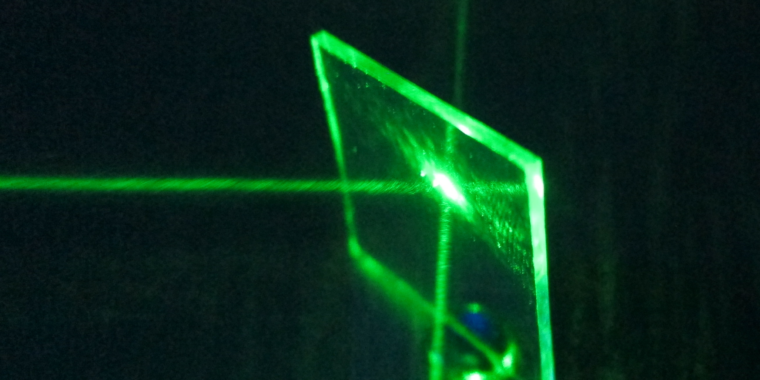
NASA
On Wednesday, NASA took another step toward landing humans on the Moon when the agency announced a plan to purchase new and more versatile spacesuits for its astronauts.
After more than a decade of work to develop a new spacesuit in-house, NASA said it would instead buy spacesuit services from two private companies, Axiom Space and Collins Aerospace.
Each of these companies will be able to use technology NASA has worked on but are responsible for the overall development of the spacesuits used on the International Space Station and activities on the lunar surface. Axiom and Collins said they intended to demonstrate their spacesuits for NASA—likely in the form of a spacewalk outside the space station—by 2025.
These will be NASA’s first new spacesuits in decades. “The previous suit has been the workhorse for 40 years,” said the director of NASA’s Johnson Space Center, Vanessa Wyche, during a news conference. “These new capabilities will allow us to continue on the ISS and allows us to do the Artemis Program and continue on to Mars.”
As part of NASA’s ongoing embrace of commercial space and goal of becoming “one of many” spaceflight customers, NASA will provide a limited amount of guaranteed funding to support spacesuit programs at Axiom and Collins. However, the bulk of the funding will be paid out through task orders between now and 2034. Wednesday’s announcement means that both companies will be eligible to bid to provide spacesuit services, including ongoing maintenance, for Artemis missions to the Moon and ISS extravehicular activities. The contract, for all of the task orders, has a ceiling of $3.5 billion.
NASA will have some requirements for the spacesuits but leave the overall design decisions to the companies. This is part of the agency’s goal of giving private companies the freedom to innovate and design spacesuits that will fulfill NASA’s needs and those of private customers. By leaning into the private sector’s greater efficiency, NASA hopes to move faster and glean a better value for taxpayers. One firm requirement, however, is a flexible design that will accommodate astronauts of all sizes. The new suits must fit a woman at the fifth percentile to a man at the 95th percentile.
The winners
Axiom Space is already building its own private space station, and its chief executive, Mike Suffredini, said Wednesday that the company’s customers definitely want to do spacewalks. The contract award means that Axiom will be able to hire 300 additional employees to work on the spacesuit project, which now must also operate in the dusty environment on the surface of the Moon. Axiom’s partners include KBR, Air-Lock, the David Clark Company, and Paragon Space Development Corporation.
“It’s fantastic to have a partnership where you can benefit from the years of experience that NASA has, and all the work they’ve done to advance the design to where it is today,” Suffredini said. “And then us as a commercial company can come in and work with them to build it in a way that’s lowest cost so that we can both utilize the suit to meet our needs.”
The other winner was Collins Aerospace, which will lead a team that includes ILC Dover and Oceaneering. These three companies have experience building spacesuits, with Collins designing the Apollo spacesuits used during the first Moon landings. While Collins does not have a private space station, it plans to offer its suits to other companies planning to build them in low Earth orbit, said Dan Burbank, senior technical fellow for the company.
The companies beat out a lot of other bidders for this opportunity. More than 40 firms were listed as “interested parties” when NASA first announced the private spacesuit program, formally known as the Exploration Extravehicular Activity Services, or xEVAS, contract. Blue Origin, Honeywell Aerospace, Leidos, Sierra Space, and SpaceX were among the other interested parties.
A long road to new suits
NASA has undertaken several different programs over the previous 14 years, generally led by a NASA field center, to develop a new generation of spacesuits. During that time, NASA has spent $420 million on various spacesuit efforts, but this has yielded limited results. Until earlier last year, NASA’s existing plan was to build six “xEMU” suits with contractor and vendor support and then issue a contract to produce additional suits.
However, it eventually became clear that the space agency should share what it has learned through xEMU with the industry and let it take the development from there, said Lara Kearney, manager of the Extravehicular Activity and Human Surface Mobility Program at Johnson Space Center in Houston.
“We never intended a government to be a production house,” she said. “So we knew there was always a transition to industry in our future. The question was when that transition should occur. We decided with the amount of knowledge we had gained from xEMU that we could hand to these guys, and that would get them kick-started. And the sooner we got them on the path to actually delivering flight suits, the higher probability we were actually going to make our schedule.”
NASA’s current timeline has the Artemis III mission landing two astronauts on the Moon in 2025. However, independent reviews of the Artemis program say that this date might be more aspirational than realistic due to several factors, including the readiness of a lunar lander and spacesuits capable of handling lunar dust.








